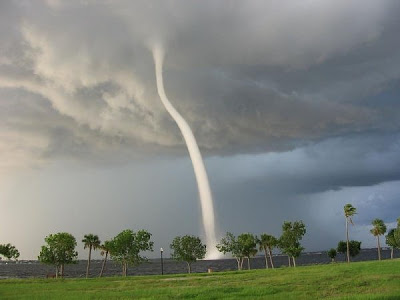According to new research from catastrophe risk modelling specialists Karen Clark & Company, annual expected insured losses for the severe convective storm (SCS) peril in the United States are now approaching $25 billion, which is higher than hurricane and earthquake perils combined.
 The insurance, reinsurance and insurance-linked securities (ILS) industry is acutely aware that the impacts and losses from severe thunderstorms, large hail, tornadoes and straight-line winds from convective weather have been increasing steadily.
The insurance, reinsurance and insurance-linked securities (ILS) industry is acutely aware that the impacts and losses from severe thunderstorms, large hail, tornadoes and straight-line winds from convective weather have been increasing steadily.
Part of the increase is due to growing exposures in regions of the United States affected by severe convective weather, but the other part of the story is down to climatic factors, which KCC notes could also be influencing severe convective storm losses in recent years.
The research, which is based on a new model from KCC that takes into account all severe convective storm and weather losses, both catastrophe and non-catastrophe, found that the insurance and reinsurance industry is likely underestimating the impacts of these events.
KCC’s research and its new risk model shows that annual expected insured losses from the severe convective storm peril are now approaching $25 billion, a figure which the firm notes is higher than models suggest for both hurricanes and earthquakes combined.
With severe thunderstorms, hail and tornadoes driving a significant share of U.S. insurance and reinsurance losses that will not be all that surprising, but the fact that is the annual expected loss from this peril suggests when the industry faces another really severe SCS season the total could end up being much higher.
KCC also found that individual SCS event losses could exceed $10 billion and that total annual losses can surpass $40 billion, with a 10% probability of occurrence. It also found that a $15 billion individual event SCS loss has a 2% chance of occurring.
Unsurprisingly, hail is the dominant driver of these loss figures, accounting for more than 70% of insured SCS losses, according to KCC.
KCC found through its research that some of the historical databases used by the industry are underestimating SCS loss potential, particularly if they only focus on major events and leave out the attritional, everyday hail and SCS losses that occur throughout the season.
KCC’s research also looked at the impacts of climate change and also El Niño conditions, with the latter being found to influence convective weather patterns and outbreaks, finding that ENSO activity is correlated with SCS outbreaks, with the signal strongest in relation to tornadoes.
KCC explains its findings, saying:
“SCS losses are a growing concern of the insurance industry. This study has shown that while the numbers of tornadoes and hailstorms are not exhibiting increasing trends, there has been an increase in the annual variability of significant SCS events. Specifically, the number of days on which there is at least one EF1 or stronger tornado is decreasing while the number of days with large numbers of tornadoes is increasing.
“Annual variability is partly the result of cyclical oscillations, such as ENSO, and natural variability. Climate change could also be contributing to more severe outbreaks over a longer time horizon, even though the relevant atmospheric variables have not yet changed as projected by the climate models.
“The KCC SCS Reference Model is a physical model that produces reliable estimates of occurrence and annual aggregate losses based on current atmospheric conditions. The impacts of climate change are accounted for by the model to the extent that the high resolution measured meteorological data capture the current state of the atmosphere.
“This new modeling approach is essential for understanding the magnitude and likelihood of large occurrence and annual aggregate losses. Other approaches and data sources have underestimated the historical and future loss potential. KCC estimates expected annual losses of $25 billion for all SCS events, not just those defined as catastrophes. Individual event losses can exceed $10 billion and annual losses can exceed $40 billion with a ten percent probability based on current exposures and climate conditions.”
Karen Clark & Co’s latest research shows that the reinsurance and ILS sector will continue to find that in many years the bulk of its losses derive from severe convective weather.
The full report from KCC can be downloaded via its website.
Register now for our upcoming ILS conference, July 12th 2018, Singapore
 View all of our Artemis Live video interviews and subscribe to our podcast.
View all of our Artemis Live video interviews and subscribe to our podcast.
All of our Artemis Live insurance-linked securities (ILS), catastrophe bonds and reinsurance video content and video interviews can be accessed online.
Our Artemis Live podcast can be subscribed to using the typical podcast services providers, including Apple, Google, Spotify and more.































